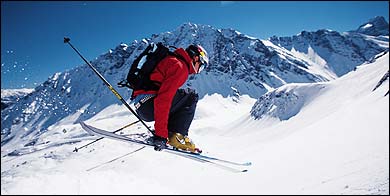READY TO GRAB FRESH BIG AIR? We’ve got hemispheres of the white stuff—and timely beta on boosting your stamina, choosing the right equipment, and finding singular steeps close to home. Who says winter ever needs to end?
Get Out There
For more great worldwide skiing and snowboarding destinations,
PLUS: North America’s Most Exotic Resorts Techno-Couture Gear: High-Style Planks, Boards, and Skiwear
Riksgränsen: Scandinavian Strut
Big air and Bacchanalia get equal play above the Arctic Circle
The Facts
Summit Elevation: 3,447 feetVertical: 1,807 feet
Skiable Area: 700 acres
Annual Snowfall: 315 inches
Price: An all-day lift ticket costs $32
When to Go: The resort opens in February and closes in late June, with the best powder falling in late March/early April, and 24 hours of sun by mid-May
Contact: 011-46-980-400-80,
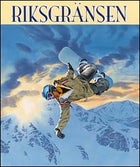
“THAT’S RIGHT BABY! You know what I like! Kill me now!” the lead singer of Riksgränsen Hotell’s employee band screams into the mike. A sweaty knot of drunken snowboarders slam-dance at his feet, tackling one another to the beer-soaked floor. Everyone is fired up from competing in today’s Scandinavian Big Mountain Championships, an extreme freeriding contest, but Grönan isn’t like any hotel bar I’ve ever been to. Black shades are drawn over the windows, because it’s endless spring 130 miles north of the Arctic Circle and the sun hasn’t touched the horizon for weeks.
A tiny oasis in the vast expanse of Sweden’s glacier-carved Lapland wilderness, 625 miles north of Stockholm, Riksgränsen is a cluster of about 20 red-painted wooden buildings with one small market and one hotel. This motley assemblage crowds the edge of Lake Vassiljaure, backed by 5,000-foot mountains rising to the south. For years I’ve heard rabid skiers and boarders throughout Europe whisper about the surreal feeling of skiing under the midnight sun on Riksgränsen’s monolithic, Sierra-like snow, and a quick pass through the bar reveals that they’re all here. Various groups of Northern Europeans, plus some Frenchmen and a couple of Nicaraguans, are sporting dreadlocks, nose rings, and tight-fitting T-shirts with cheeky sayings.
This is an athlete’s resort, where skiers and boarders come to take full advantage of the long days and the maritime climate—315 inches of snowfall annually. Spring skiing is what Riksgränsen is famous for, and on the weekends the lifts shut down at 1 a.m. Everyone heads out onto the slopes after dinner, and on sunny days the mountain swarms with crowds dressed in Speedos and drinking chilled shots of licorice schnapps. Despite being almost 100 miles north of any tree I might hit, I enlist a guide, Pär Lövgren (a.k.a. Pancho Snowfall), to keep me from winging off the resort’s unmarked cliffs and into crevasses. “I haven’t touched a ski pole in ten years,” Pancho confesses on the lift. I follow his advice, ditch the poles, and use my upper body like a snowboarder. After following Pancho’s waving arms for a couple of runs, I tune in to the reckless spirit of the place and strike out on my own.
In a comic twist of rainy weather and jet lag, I never get to see the Big Mountain Championships competitors do their stuff. Instead, I spend the week becoming increasingly obsessed with carving up the slush on my own little “big mountain” course on Klumpen, an off-piste black-diamond run off Nedre Stolliften, the chairlift by the lodge. As the sun spins overhead in a circle, I zoom through the natural-terrain park and get into a rhythmic trance. That’s right, baby. You know what I like.
WHERE TO SKI
To reach the steep chutes and open faces that provide the setting every May for the Scandinavian Big Mountain Championships, hike 500 feet up Nordalsfjäll, off the resort’s back side.
WHERE TO STAY
Life in this town buzzes around the 164-room, three-story Riksgränsen Hotell, with guests lounging in the couch-lined halls and gathering in the bar for thumping DJ music. Rates: $400 per person for four nights, which includes three days of lift tickets and enormous breakfasts.
WHERE TO EAT
The hotel restaurant, Lapplandia, serves Swedish classics like moose and reindeer, with a surprisingly big wine list.
GEAR & GUIDES
Internationally certified guides lead clients down 3,000-foot runs off several nearby peaks. The best deal costs $230 per person for three helicopter flights.
GETTING THERE
Fly from Stockholm to Kiruna on SAS ($240; 800-221-2350, ), then take the train ($12 one way; 011-46-862-950-00, ), or rent a car and drive 70 miles northwest on Highway E10.
Sweden: The Right Gear
Storming snowboarding’s Valhalla? You’ll need a sturdy ride, beefy boots, and a party-proof flight suit.
The Riksgränsen Spirit at a Resort Near You
Alyeska Ski Resort, Alaska (800-880-3880, ): It’s not in the Arctic, but it could be. The long spring days, wet climate, and 4,000-foot elevation all make it similar to Riksgränsen.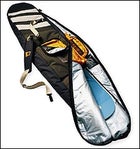 Now Boarding: After a day of thrashing your ride, stash it in the BURTON Gig Bag. The well-padded Gig handles up to a 176cm deck, and a top-access boot pocket and fleece-lined goggle pouch keep the rest of your crucial hardware close at hand. ($70; 800-881-3138, )
Now Boarding: After a day of thrashing your ride, stash it in the BURTON Gig Bag. The well-padded Gig handles up to a 176cm deck, and a top-access boot pocket and fleece-lined goggle pouch keep the rest of your crucial hardware close at hand. ($70; 800-881-3138, )BOARD: The Burton T6 is the first plank built around the same aluminum-honeycomb material found inside helicopter rotors. That translates into a light, snappy board that initiates precise turns. While the T6 will whip nimbly through a halfpipe upon request, it’s a stiff, all-terrain ride at heart. ($600; 800-881-3138, )
BINDINGS: The new Burton C16 strap binding justifies its price tag with a carbon-fiber highback that’s 27 percent lighter than its previous plastic incarnation. Plus, new buckles release easier, and expanded vinyl acetate atop the highback reduces pressure on the calves. ($350; 800-881-3138, )
BOOTS: Simple shoelace-style board boots don’t offer larger riders adequate edge control. Big guys prefer boots like the K2 Rival Boa, which doesn’t pass its support responsibilities on to the binding. The two-piece Boa subdues slop via a drawcord on the liner and a ratcheting cable on the outer shell. ($279; 800-972-4038, )
PANTS: The Helly Hansen Tryst wraps intelligent features into a proprietary waterproof-breathable shell fabric. Exhibit A: Cargo pockets on each thigh angle up and in; get into ’em on the chair without raining your kronors on unsuspecting sliders below. ($200; 800-435-5901, )
SHELL: Named in homage to snowboarding’s outlaw heritage, Quiksilver’s High-Speed Chase is the ultimate ride jacket. Technical touches abound: hand gaiters complete with a wristwatch “window,” interior CD-player pocket with headphone-cord port, Gore-Tex, pit zips, and a powder skirt. ($330; 800-576-4004, )
MIDLAYER: Even in a sopping storm, Patagonia’s Puffball Sweater will keep your core temp in the comfort zone. Credit hardworking Thermolite synthetic insulation encased in brightly hued polyester-and-ripstop-nylon fabric. ($145; 800-638-6464, )
EYEWEAR: This season, Smith tweaked its popular Triad goggles to work better with a helmet. The add-on, a kind of pivoting bracket that isolates lid motion from the goggle’s fit, parks the Triad evenly across nose and brow. ($85; 800-635-4401, )
HELMET: The Boeri Steez helmet—the company’s newest and lightest brain bucket—accommodates the wild extremes of Scandinavian weather with removable ear flaps and vent shutoffs. ($110; 800-394-6741, )
GLOVES: Swany’s FX-19 GENERATIONS are stuffed with three different kinds of DuPont insulation, and the gloves include a waterproof-breathable layer that also reduces odor. ($90; 800-237-9269, )
PACK: The Deuter Explorer backpack has a burly snowboard-attachment system that’s reinforced with rubber to keep edges from slicing the fabric. Padded hip fins stabilize your load, while interior pockets for thermos, shovel handle, and a hydration reservoir (not included) keep things organized. ($109; 303-652-3102, )
Niseko: Skiing Japanese
Where to find 500 inches of powder, stashed in secret off-piste oases
The Facts
Summit Elevation: 3,839 feetVertical: 3,117 feet
Skiable Area: 2,191 acres
Annual Snowfall: 551 inches
Price: An all-day lift ticket costs $38
When to Go: Mid-December through April is best
Contact:
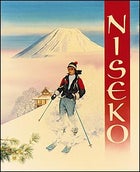
BORING A SKI POLE INTO two feet of powder, the crow’s-feet of his crinkly grin peeking out the sides of his goggles, Yutaka Takanashi nods and says, “Niseko no bai wa, kore wa heikin desu yo.” Translation: “This is about average for Niseko.” We’re traversing east through glades of adolescent birch trees with the sound of dueling woodpeckers in the distance. Takanashi, our 34-year-old guide, is one of Japan’s top telemark skiers, and we’ve just finished skiing three off-piste glades of powder that, were it not for fat skis, might have been classified as too deep.
Sitting in the southwest corner of Japan’s northern island of Hokkaido, Niseko is one of the snowiest places on the planet, receiving well over 500 inches of snow a year. Storms from Siberia pick up a sudden surge of moisture from the Sea of Japan and slam into the 4,000-foot peaks of Niseko, exploding like a piñata that’s been hit by Barry Bonds. Niseko is actually composed of three areas—Annapuri, Higashiyama, and Hirafu—all tied together at the summit, where a tangle of five lifts ferry skiers up into treeless, intermediate-level terrain. All told, Niseko has 2,191 skiable acres and 30 miles of trails. Only a few trails measure more than 30 degrees in pitch, but Niseko’s 15 square miles of backcountry offer plenty of steeps—you just need to know how to find them. Which is where Takanashi comes in. Six foot one with a mane of black hair, Takanashi is light-years from the stereotypical small-frame Japanese salaryman. The name of his two-year-old guide service, Toyru, is taken from the language of Hokkaido’s indigenous people, the Ainu. It means “to go into the mountains.”
So we go, riding three lifts to the top of the ski area, hiking for ten minutes, then dropping over to the north side of 4,295-foot Annapuri. After three turns in some hard crust, I’m skeptical about Takanashi’s slope choice. But a moment later I’m almost thigh-deep in fluff. For the rest of the day it’s the same formula: heaping doses of powder, a final collapse at the end of the run, followed by a flurry of Japanese and English superlatives. When we started, I was worried there’d be no untracked powder; now I’m just hoping my legs will hold out.
My legs survive, but just barely. And as with all the best Japanese après-ski experiences, we wind down at an onsen, or hot spring—namely, the milky-green 108-degree waters of Goshiki, a 25-minute drive from the ski area. The bath even has a floating slab of wood, perfect for resting a frosty can of Sapporo. For Niseko, this is an average day.
WHERE TO SKI
For backcountry enthusiasts with proper gear, traversing north off the top of lift seven will lead to more sustained, open terrain, with plenty of powder. Warning: The backcountry isn’t bombed or patrolled, so ski at your own risk.
WHERE TO STAY
Niseko Higashiyama Prince Hotel is a Japanese version of the Marriott and has English-speaking staffers—a boon for dog-tired ski bums (doubles, $130-$230; 800-542-8686, ).
WHERE TO EAT
B’s Café, a five-minute walk from the Hirafu lifts, offers Sapporo on tap, Western-style sandwiches, and made-to-order vegetarian dishes.
GEAR & GUIDES
The Niseko ���ϳԹ��� Center (011-81-136-23-2093, ), founded by Australian Ross Findlay, can provide rental gear, guides (including Yutaka Takanashi), and evening snowshoe tours.
GETTING THERE
Fly to Sapporo from Tokyo on All Nippon Airways ($250 round-trip; 800-235-9262) and then take the train from the airport for $24, one-way. In less than three hours you’ll arrive at Niseko station. From there it’s just a few minutes in a cab to most hotels.
Japan: The Right Gear
Good news for powder goddesses: fat skis and other deep-snow essentials are ripping it up with an x chromosome
For Domestic Volcano and Deep-Powder Action
Mount Bachelor, Oregon (541-382-2442, ). Niseko and Bachelor share four common bonds. They have heaps of snow, wide-open terrain, and laid-back locals, and they’re both volcanic. DAKINE’s CONCOURSE DOUBLE can swallow two pairs of skis (and up to four with the bindings detached) and two pairs of poles. Full padding and ripstop nylon protect against dings, and urethane wheels help ease that long run to International Check-In. ($130-$140; 800-827-7466, )
DAKINE’s CONCOURSE DOUBLE can swallow two pairs of skis (and up to four with the bindings detached) and two pairs of poles. Full padding and ripstop nylon protect against dings, and urethane wheels help ease that long run to International Check-In. ($130-$140; 800-827-7466, )SKIS: For years, petite women with a penchant for ripping big mountains on fat skis ended up floundering on boards that were too long and stiff for them. Enter the new K2 Phat Luv, a women’s-specific version of the company’s renowned AK Launcher and the first softer-flexing powder stick available in lengths below 165cm. ($675; 800-972-4063, )
BINDINGS: The Salomon S810 Ti Axe binding is a lock for most female skiers: Titanium in the heel track and housing keep it light and durable, while a lower release range accommodates less torque. It’s a high-performance alternative to men’s overbuilt race clamps. ($245; 800-225-6850, )
BOOTS: The Rossignol Bandit B1 women boot proves how far we’ve come since gals suffered in pink-accented mush buckets. This advanced freeride boot (guys, look for the Bandit B1 Men) is soft enough to absorb a big huck yet stiff enough to rail your edges through the corduroy. ($499; 802-863-2511, )
PANTS: Orage’s AWD2 pants are highly technical—and highly stylish—trou. The svelte denim-look duds are actually waterproof and breathable poly-nylon wonders. You’ll remain drier, and infinitely more hip, than the kids still cruising the slopes in their Levi’s. ($220; 800-250-5056, )
SHELL: The Marmot women’s Super Shero isn’t just a smaller version of the popular men’s Super Hero soft shell; it’s specifically cut for narrower waists and shoulders. Thejacket, a synthesis of Gore N2S Windstopper and Polartec WindPro and PowerShield fabrics, stymies even the nastiest mountain weather. ($225; 888-627-6680, )
MIDLAYER: The Salomon W’s Moto Mesh Zip Neck midlayer moves effortlessly from street to snow. Credit the uncluttered design and a proprietary fabric that combines warmth, breathability, and quick-drying qualities. ($69; 800-225-6850, )
EYEWEAR: Spy’s Sonix evoke sixties styling in gogglelike shades that seem plucked from an early Godzilla flick. But the optics are pure 21st century, built around a single glass lens engineered to eliminate distortion and boost peripheral vision. ($160; 800-779-3937, )
HAT: The RLX Ski Hat mixes an old-school tassel with a contemporary, close fit that’s not at all boxy. Made of ultralight itchless wool, it’s ideal for thick-maned women who don’t require an expedition-weight toque. ($35; 866-897-7656, )
GLOVES: Available in sizes down to extra small, the Black Diamond Stratos glove offers four-way stretch in the fingers for dexterity and removable waterproof inserts for quickdrying in the field. ($100; 801-278-5533, )
PACK: The Dakine Heli Pro Small is a 900-cubic-inch pack designed for spontaneous backcountry forays. It keeps your gear in order with loops for an ice ax or shovel on both sides, a separate pocket for a shovel blade, and a mesh nest for your beverage reservoir. ($80; 800-827-7466, )
Portillo: Los Grandes Andes
Splendid isolation meets old-world glam and this all-in-one Chilean resort
The Facts
Summit Elevation: 13,900 feetVertical: 7,000 feet
Skiable Area: 800 acres
Annual Snowfall: 252 inches
Price: See “Where to Stay”
When to Go: mid-June to early October
Contact: Hotel Portillo, 800-829-5325
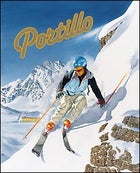
ANOTHER BLUEBIRD MORNING in Portillo, Chile, and the five-seater Llama—a dragonfly of a helicopter, all tail—lifts off from the swank old Hotel Portillo. I gawk out its buggy eye as 22,834-foot Aconcagua rises to the southeast. “Watch that lever,” says Mario Espinoza, the pilot, pointing to the handle wedged beneath my arm. “The door could fly off.” But Mario is grinning as he says this, and I am, too, as the morning clouds race over the Andes.
My guides—tall, suave, and Swiss Pierre Tagliabue and ruggedly boyish Canadian Matt Wylie—are impossibly heroic, because all the instructors and guides from the Northern Hemisphere who compete for spots in the powder capital of the Southern Hemisphere are impossibly heroic, and I think to myself, By God, I would follow them anywhere. Matt jumps up and down on a cornice —¡ué macho!—and pronounces the snow bueno but “variable,” which I fear is guidespeak for everything from “crust over concrete” to “skin of ice over abyss,” but my brain is already an addled soup of hero worship and Latin romance, and off I go anyway, over the lip and down the steep eastern slope of the Mardones Valley. I’m heli-skiing in the Andes, and there’s still carne and cabernet for lunch. Portillo wasn’t always this way, and by “this way” I mean the world’s best mix of New World snow and Old World glamour, a one-hotel wonderland at 9,350 feet, 40 miles beyond Los Andes, the last town before Argentina. Owner Henry Purcell was 26 in the summer of 1961, when he first saw El Grande Hotel Portillo, the 1942 building beached on the western shore of Laguna del Inca, its only guest the caretaker’s black sheep, Lumumba. That winter, a single storm dumped 17 feet, stranding 200 guests and employees for a month. They survived on beef air-dropped by the Los Andes flying club; those with pressing engagements postholed out, with valets carrying their bags.
The hotel still retains that The Shining-meets-Titanic vibe, as if the ship’s crew, instead of drowning, had rigged up a few lifts on the iceberg and told the chef to keep on flambéing. In the paneled dining room, you might be seated next to an elegant Brazilian family, the Austrian downhill team (was that Hermann Maier dancing on the bar last night?), or Warren Miller’s film crew—all dressed for dinner. “Skiing used to have a lot of romance and sex appeal,” Warren Miller’s director of photography, Chris Patterson, said one morning over a café con leche. “This place brings that out in people.”
It also brings out 800 in-bounds and 12,000 sweetly out-of-bounds acres—all to yourself. (The resort holds only 450 guests, though Chile’s not-so-elite ski troops train here, executing laborious stem christies in full camo.) Some of the runs on 13,900-foot Ojos de Agua are so precariously perched on avalanche chutes that permanent lifts are out of the question. Instead, everybody roars up Roca Jack on ingeniously reckless five-man Poma lifts anchored to the mountain with cables, catching air on the uphill.
And by the last run—a powder shot down Primavera ending in a hike back over the frozen lake—you’ve still got time for Carmen the massage therapist to work on your back, and perhaps to drag yourself over to La Posada, the employee bar, where the muy serioso bartender, Oscar, pours pisco sours as the lifties and local ��DZ�����í�� toast over heaping bowls of carne.
But for now, up in the Mardones Valley it’s clouding over, and everyone thinks, Why doesn’t Mario just drop us off right at Tio Bob’s, the old slopeside stone refugio, for lunch? And condors are wheeling on thermals as the Llama thwacks rotowash over the hut, and there’s a fire in the fireplace and pescado on the grill, and the Andean afternoon stretches before you.
WHERE TO SKI
Masochists will want to take a shot at Super C, a 7,020-foot couloir that’s a three-hour hike above the Roca Jack lift.
WHERE TO STAY
Lucky for you, Hotel Portillo (800-829-5325, ) is your only option. Prices, which include seven days of lift tickets and most meals, range from $990, for a shared four-man in the hotel’s Octagon Lodge, to $1,690, for a lakeside double. Lowballers can stay at the hotel’s Inca Lodge, a bargain bunker with shared bathrooms, for $420 a week, including lifts and cafeteria fare.
WHERE TO EAT
In Hotel Portillo’s grand dining room, of course, where red-coated ma”tre d’ Juan Beiza has served guests since April 1968. Dinner’s not till 8:30, so fortify yourself with a predinner pisco in the hotel bar.
GEAR & GUIDES
Portillo heli-skiing is fabulous and relatively affordable: Trips to the Mardones Valley and surrounding peaks start at around $100. Reserve in advance at .
GETTING THERE American Airlines offers direct flights from Miami and Dallas-Fort Worth to Santiago for about $800. Portillo Tours and Travels (011-56-2-263-0806) runs a shuttle service the 102 winding miles from Santiago up to the hotel.
Chile: The Right Gear
Monstrous, pupil-dilating terrain demands heavy hardware and technical layers built with a high-alpine attitude.
The Vertical Romance of Portillo, Here at Home
Taos: Spend an all-inclusive week at the slopeside St. Bernard (505-776-2251, ), in ����貹ñ�DZ�-heavy New Mexico, and you can pretend the rest of America never existed.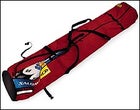 Pick-Up Sticks: The SALOMON EQUIPE safely stows two pairs of skis, each up to 180cm in length, and poles. A generous lining of closed-cell foam will protect your hardware from any uncivilized treatment on the tarmac. The full-length two-way zipper provides easy access, while compression straps cinch the Equipe into a tidy bundle. ($59; 800-225-6850, )
Pick-Up Sticks: The SALOMON EQUIPE safely stows two pairs of skis, each up to 180cm in length, and poles. A generous lining of closed-cell foam will protect your hardware from any uncivilized treatment on the tarmac. The full-length two-way zipper provides easy access, while compression straps cinch the Equipe into a tidy bundle. ($59; 800-225-6850, )SKIS: The Völkl Gotama is a tanker-wide twin-tipped board—130mm at each end—that’ll hold an Andes-size turn, then stick a 540 in the terrain park. Like Portillo’s discotheque patrons, it dresses in black; unlike them, it’s Jabba the Hut chubby. ($695; 800-264-4579, )
BINDINGS: While locked into Marker’s COMP 1400 Piston Control bindings, the ride is smoother than Barry White. A partially floating toe-piece and a piston under the middle of the platform knock out vibrations, even at high speeds. ($395; 800-453-3862, )
BOOTS: After cranking in Tecnica’s Icon Alu Hot Form boots all day, just hook ’em up to an electrical outlet or 12-volt car plug to dry the liner. Similar to Tecnica’s race boots, the Icons offer significantly more flex and a hinged cuff that both quickens response and permits easier entry and exit. ($775; 800-258-3897, )
PANTS: The Arc’Teryx MinuteMan PANT anticipates all conditions and dilemmas. Spring downpour? Cue the Gore-Tex XCR-enhanced nylon and watertight zippers. Sun-blasted backcountry climbs? Peel open the thigh vents. Noshed too much Argentinian steak? Loosen the integrated waist belt. ($300; 800-985-6681, )
SHELL: Newly improved with more strategically placed switch and battery, the North Face Met 5 jacket still delivers warmth at the press of a button via electrically heated filaments that run throughout the piece. ($600; 800-362-4963, )
MIDLAYER: You stuff your shell in your pack to stay cool for an out-of-bounds hike and, of course, it starts snowing. But don’t worry: The NIKE ACG Composite Vest is the rare fleece with a flexible water-repellent and wind-and-abrasion-resistant layer (Nike Sphere Pro Dry), so you can resist that moisture while wicking your own out through the vest’s thermal-regulating interior. ($115; 800-344-6453, )
EYEWEAR: Stand back—the Oakley Monster Dog is comin’ through. Bay-window-size lenses shield the eyes from glare and blowing snow. ($85-$155; 800-403-7449, )
HELMET: Brain-bucket atheists challenge the very existence of a comfortable helmet. The Briko X-fusion gives them religion with an anallergic chin strap, a removable internal liner, and a two-part shell that channels air over the noggin, keeping things cool. ($110; 800-462-7456, )
GLOVES: Smart is the operative word in SmartWool’s Mountaineer glove. A wool lining, leather palm, and water-and-abrasion-resistant nylon top collaborate to warm your hands while anatomically molded knuckles help keep your digits dexterous. ($110; 800-550-9665, )
PACK: The Mammut Eclipse is made with a lightweight tear-proof fabric called Dupont Cordura 500 D. Compartments swallow a hydration bladder, ice ax, and first-aid kit—tempting you to overpack. ($149; 800-451-5127, )
Monterosa: Italia Extreme
Go fast and sleek at the Ferrari Testarossa of ski resorts
The Facts
Summit Elevation: 11,644 feetVertical: 7,754 feet
Skiable Area: 714 acres
Annual Snowfall: 240 inches
Price: An all-day lift ticket costs $34
When to Go: February and March have the best snow
Contact: 011-39-0125-303-111
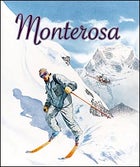
“ABOVE ALL, DO NOT FALL. If you fall, you will die.”
With that bit of confidence-building advice, Jean-Marc Crampe, a ponytailed ski guide, leaped off a cornice and into a 60-degree couloir. The night before, in the hotel bar, after one too many rounds of grappa, I had persuaded him that I was up for the nastiest descents he could show me in the Monterosa area of the Italian Alps, the latest mecca for extreme skiing.
After all, wasn’t Italy the country where skiers spent more time parading around in fur coats than skiing? Well, Monterosa—a resort named after the Monte Rosa Range, whose 15,000-foot peaks straddle the Swiss-Italian border—isn’t like the rest of Italy.
Sure, there are 110 miles of conventional trails that link the villages of Champoluc, Gressoney, and Alagna. In the hotels, there are tuxedoed waiters who fussily serve weekend visitors from Milan. And the lift attendants still whistle at women in one-piece Bogner suits. But up above, there is terrain that makes Jackson Hole look like a nice place to cross-country ski. That, and the absence of crowds, has turned Monterosa into a cult destination for alpine ski bums. It’s the new La Grave. Peering over the rim of the couloir, I watched Jean-Marc make a few jump turns to avoid crashing into the rock walls that lined the ten-foot-wide sliver of snow. I turned down his offer to let me rappel over a frozen waterfall at the top and side-stepped and slid my way down about 100 yards to meet him. As terror gave way to mild fear, I was able to start skiing again. After 2,500 vertical feet came the reward—the couloir opened up enough that I could let my old-school skis rip through the softened spring snow. Finally, when the snow ran out—the March sun was beating down—we hiked through the woods to Alagna.
The couloir was only a quick tune-up for the main event the next day, a heli-skiing trip from Gressoney across the Swiss border to Zermatt and back over to Italy, in the shadow of 15,203-foot Monte Rosa. Heli-skiing, strictly limited or banned in other parts of the Alps, is still widely practiced in Italy, and Monterosa is the best base for it.
After we had strapped on our avalanche beepers and harnesses, two buddies and I followed another guide, Claudio Bastrentaz, to the chopper, which dropped us off on a 13,000-foot saddle on the flanks of Monte Rosa. Before us stretched the Grenzgletscher, a ten-mile ice floe. After a scenic tour down to Zermatt, past towering seracs and gaping crevasses—a “cakewalk,” Claudio said in accented English, even though we had skied twice the vertical drop of Vail—we got another helicopter ride up to the ridge.
“I hope you like steep slopes,” Claudio said after the helicopter had left, giving us no choice in the matter. We followed him onto a 50-degree firn-covered incline. The skiing was so smooth, I was lulled into a false sense of security, broken only when I saw Claudio waving his poles at me from below what looked like a stair-step in the mountain.
“Jump, jump,” he yelled. As I flew off the step, I looked down into the abyss of a five-foot-wide crevasse. Once we had all cleared this hurdle, Claudio informed us that we had made a “first descent,” giving us the right to name it.
“You must name it after your girlfriends,” he said. Proving that we were, after all, in Italy.
WHERE TO SKI
The Diretta ski route is an unmarked but easy-to-follow off-piste itinerary from the top of the Alagna cable car down to neighboring Gressoney.
WHERE TO STAY
Hotel Dufour ($600 per person for seven nights, including all meals; 011-39-0125-366-139, ), at the foot of the slopes in Gressoney, is the most convenient place to sleep, particularly because the guide service is based there. Rooms are basic but clean and quiet, with balconies facing the nearby Punta Jolanda ski lift.
WHERE TO EAT
Champoluc, Gressoney, and Alagna are tiny villages, not your typical sprawling ski resorts. It’s better to get a hotel with half board—dinner included—than to search in vain for food in one of the trattorias scattered about. On the mountain, Ristoro Belvedere, in Champoluc, is a gem—a hut where you can get a heaping plate of polenta and sausages for $10.
GEAR & GUIDES
Scuola di Alpinismo Monte Rosa (011-39-0125-366-139, ), based in the Hotel Dufour in Gressoney, is the place to go. A guided tour above Monterosa and Zermatt, using two helicopter drops, costs $170 per person. Without a helicopter, a guide costs $260 a day for a group of up to five people. David Sport, in Gressoney (011-39-0125-366-124), rents any equipment you need for skiing off-piste on glaciers.
GETTING THERE
Alitalia (800-223-5730, ) flies from New York to Milan starting at $515 round-trip. Rent a car and drive 70 miles through the Alps foothills to the resort.
Italy: The Right Gear
Out to tame the steeps, Mr. Bond? You’ll need Q-worthy technology and style on that triple-black-diamond run.
Monterosa's Kindrid Spirit in B.C.
Nelson, British Columbia: Whistler gets all the glory, but the Selkirks get all the powder (up to 40 feet per year). For a Monterosa-like off-piste experience, contact White Grizzly ���ϳԹ���s (800-843-5557, ).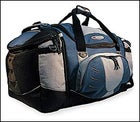 Boot Magician: Stash your Scarpas in the end compartments of HIGH SIERRA’s 6,720-cubic-inch 4-IN-1 CARGO DUFFEL and you’ll have enough room in the main hold for a week’s worth of garb. Zip off the ends and mate ’em up—you’ve got a trick stand-alone boot caddy. Bonus: Straps on the boot modules make one an instant daypack, the other a messenger bag. ($120; 800-323-9590, )
Boot Magician: Stash your Scarpas in the end compartments of HIGH SIERRA’s 6,720-cubic-inch 4-IN-1 CARGO DUFFEL and you’ll have enough room in the main hold for a week’s worth of garb. Zip off the ends and mate ’em up—you’ve got a trick stand-alone boot caddy. Bonus: Straps on the boot modules make one an instant daypack, the other a messenger bag. ($120; 800-323-9590, )SKIS: A titanium-reinforced core and a generous 108mm-wide shovel help the Atomic R:11 Betapuls-ti power through glacial crud, while a svelte 70mm waist snaps quick turns in pinched couloirs. ($875; 800-258-5020, )
BINDINGS: Wed the R:11 to Atomic’s CR:412 binding. The heel piece glides on a metal band, allowing uninterrupted flex through the ski. Move the binding fore or aft to suit snow conditions and level of expertise. ($280; 800-258-5020, )
BOOTS: Forged in the far-northern Italian town of Montebelluna, LANGE racers have long won praise for their snug, anatomic liners and sensitive underfoot feel. The Comp 120 LF advances this legacy with bigger buckle ratchets and flared, rounded straps that are easy to adjust with gloves on. ($700; 800-992-3962, )
PANTS: If you accidentally schuss into a shallow Monterosa crevasse, nothing will save your butt like the Oakley Stitchless Pant. Fully taped seams and waterproof zippers guarantee dryness, while seamless leg construction, articulated knees, and roomy seat ensure comfort. ($400; 800-403-7449, )
SHELL: Mountain Hardwear’s Defiant is a true all-conditions jacket thanks to abrasion-resistant nylon. Cut full to accommodate layering, this tough shell includes pit zips, powder skirt, and helmet-friendly hood. ($240; 800-953-8375, )
MIDLAYER: The new Columbia Mountain Mobility Sweater is tailored entirely from water-repellent Schoeller Dryskin—a four-way stretch fabric—and zips inside any of Columbia’s external shells. ($190; 800-622-6953, )
EYEWEAR: Italian optics firm Briko toned down its trademark Euro design flourishes with the new Icarus goggle. Upper, front, side, and bottom ports on the double lens help keep this eye shield fog-free. ($110; 800-462-7456, ) HAT: Some skiers don the Jytte Scull Beanie for the inner band of soft CoolMax fleece and the tight, wind-cheating woolen weave. Mostly, though, they wear Jytte (pronounced “yoo-TAY”) hats because they look so cool. ($30; 208-788-1266, )
GLOVE: Though a product of Wyoming, Cloudveil’s Troller Glove looks and feels molto Italiano thanks to buttery leather, Primaloft insulation (with a 20-degree range), and waterproof-breathable Schoeller stretch fabric. ($65; 888-763-5969, )
HYDRATION PACK: Stay watered on Monterosa’s network of sky-piercing lifts with your 50-ounce CamelBak SnoBowl. It nestles under your jacket, and its insulated reservoir and tube guard against freezing. ($40; 800-767-8725, )
365 Days of Winter
There’s always snow somewhere. Here are the coolest places on the globe to find it.
NEW ZEALAND [Craigieburn] The official stats—three rope tows and 1,650 vertical feet—give the illusion that this is a pip-squeak of a ski area. Don’t be misled. This best known of New Zealand’s “club fields”—ski areas run by local organizations—features giant bowls, 50-degree couloirs, and runs that can exceed 3,000 vertical feet, depending on snow conditions. Best of all, you’ll share this killer terrain with fewer than 100 skiers. SEASON: July to September. CONTACT: 011-64-3-365-2514, . PACKAGE DEAL: $75, including transportation, lift ticket, rope-tow gear, lunch, and a half-day with a guide; Black Diamond Safaris, 011-64-25-508-283, . KINDRED SPIRIT: Mad River Glen, Vermont (802-496-3551, ), attracts the same brand of ski nuts with its old-fashioned lifts and “I dare you” attitude.
SPAIN [Baqueira] Home turf to Juan Carlos, the world’s most ski-crazed king, the Pyrenees may be smaller than the Alps, but the ski scene is also more low-key, less expensive, and less likely to lure fellow Americans. Expect a heavy dose of authentic Spanish culture, including lots of tapas and dinner at 10 p.m. But the real charm of Baqueira is big-mountain terrain. How white-knuckle gnarly can it get? Escornacrabes, a favorite area of Baqueira experts, roughly translates as “the place where goats fall and die.” SEASON: December through April. CONTACT: 011-34-973-63-9010, . PACKAGE DEAL: Book a seven-night stay (including breakfast) and six days of lift tickets for $750 per person through the resort. KINDRED SPIRIT: Grand Targhee, Wyoming (800-827-4433, ), is often passed over for Jackson Hole, to the east, but is blessed with some of the best powder in the U.S. SWITZERLAND [Andermatt] “Ander” is a German prefix meaning “other.” Think, then, of Andermatt as the alternative to Zermatt. In Andermatt, you still get the Swiss-chalet character, but none of the fur-coat glitz. Andermatt may seem relatively small—just 12 lifts and 36 miles of trails. But well-traveled experts will tell you that the light snow and long, steep runs on 9,719-foot Gemsstock, the area’s highest peak, allow you to go as big as anywhere else in Switzerland. SEASON: November to May. CONTACT: 011-41-41-887-1454, . PACKAGE DEAL: $480, including seven nights’ lodging, airport transports, and breakfast; All Mountain Vacations, 888-838-8142, . KINDRED SPIRIT: Just as Andermatt is the other Zermatt, Solitude, Utah (800-748-4754, ), is the other Alta. Andermatt and Solitude share the same kind of snow and terrain—with zero attitude.
ARGENTINA [Cerro Castor] The world’s southernmost ski area, just beyond the fringes of Ushuaia, is so far off the grid that most Argentinians still don’t know it exists. Officially, the skiable terrain comprises about 1,000 acres of open bowls overlooking the Beagle Channel, but another 2,500 acres will eventually be opened. Best of all, you can book a seven-night, six-day trip, including lodging, breakfast, and lift tickets, for as little as $321. SEASON: July through September. CONTACT: 011-54-901-21423, . PACKAGE DEAL: $321; Ski Vacation Planners, 888-822-6754, . KINDRED SPIRIT: Le Massif, Quebec (418-632-5876, ), has the same end-of-the-earth feeling.
AUSTRIA [Ötztal] St. Anton and Kitzbühel may be better known to American skiers, but the ötztal region, where the Austrian Alps rise up to peaks exceeding 12,000 feet, literally stands above them. Ötztal is a greatest-hits amalgam of all things Austrian: a major resort town in Sölden, charming high-mountain villages like Vent, a ski school dating back to 1928, and runs exceeding 5,000 vertical feet. Snow at other Austrian areas, notably low-elevation Kitzbühel, can be iffy, but Ötztal’s high elevation assures quality winter snow and almost year-round glacier skiing. SEASON: Year-round, conditions permitting. CONTACT: 011-43-52-54-5100, . PACKAGE DEAL: $1,429, including flights from New York, seven nights’ lodging, breakfast, and dinner; ���ϳԹ���s on Skis, 800-628-9655, . KINDRED SPIRIT: Just like Ötztal, the Summit at Snoqualmie, Washington (425-434-7669, ), is an almost exclusively locals-only mountain surrounded by higher-profile peaks.
119 Down, Five to Go
Meet Nick Palazzetti, quite possibly America’s most fanatical skier
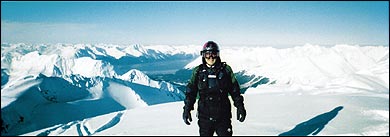
Certainly, overseas powder has its appeal. But Nick Palazzetti has found enough steep and deep stateside to keep him occupied every season since 1978. This winter, barring injury or untimely airline bankruptcy, the 58-year-old fundraiser from Pittsburgh, who started skiing when he was 28, will complete a quest to ski every major mountain in North America—all 124 of them (by his count). Over the past quarter-century, he’s ticked off 95 resorts and 24 heli-ski or snowcat operations, from Arizona to Newfoundland. Still to go: Castle Mountain (Alberta), Le Massif (Quebec), Whitewater (British Columbia), Silver Mountain (Idaho), and Silverton (Colorado). Five mountains, three cross-country flights, and an all-day drive—just an average winter agenda for the peripatetic Palazzetti.
Why the wanderlust? Why not just find a nice resort and keep going back?
I did do that for a little while. The first place I skied out west was Aspen, and I liked it there. But as I improved, I wanted steeper and more extreme.
How does a resort make your list?
Initially, I set the threshold at 3,000 vertical feet, but I quickly realized that wouldn’t work because Taos, a great mountain with about 2,600 feet, wouldn’t qualify. I reduced the number to 2,500, but that still disqualified Alta. So I settled on 2,000. I have to ski 60 to 70 percent of a mountain before it counts.
That’s a lot of mountain—how do you get it all done in a day or two?
High-speed lifts have really helped.
Is there a downside to your quest?
Yeah. This type of travel isn’t conducive to a relationship—not many people want to ski six mountains in one trip.
What’s been your worst experience?
I’ve been injured a couple of times pretty badly—torn rotator cuff, torn calf muscle, torn ACL, broken ribs, two broken shoulders. I fell in a chute called Turbo, at Arapahoe Basin, and slid for about 500 feet. I stopped just above a cliff. I’ve also had a few close calls with avalanches.
What’s missing in the North American ski experience?
The ability to ski from village to village. Other than that, it doesn’t lack anything.
After all these years, what is your favorite North American resort?
Whistler Blackcomb, B. C., because the snow quality and terrain are as good as anywhere in the world.
Once you finish the list, how will you celebrate? I’ll focus on South America next summer. When I’m done with that, I’ll ski in Europe until I die.


